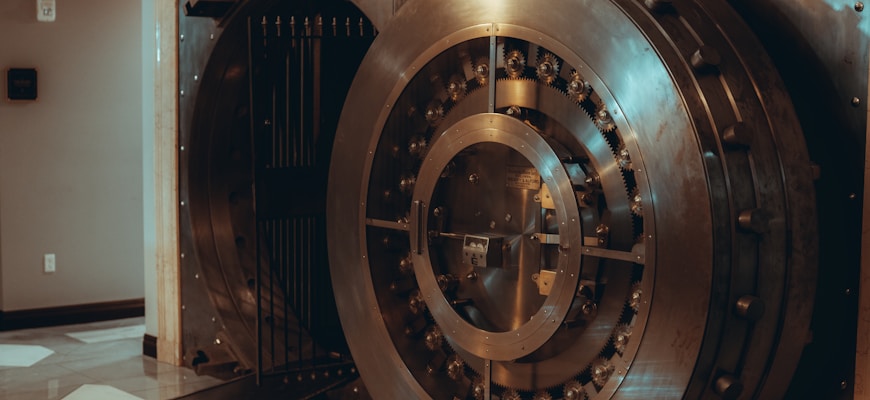The Future of Crypto Wallets: Security, Usability, and Innovation

- Understanding the importance of security in crypto wallets
- Exploring the evolution of usability in crypto wallets
- Innovative features shaping the future of crypto wallets
- Challenges and opportunities in enhancing crypto wallet security
- The role of biometric authentication in securing crypto wallets
- Balancing security and usability in the design of crypto wallets
Understanding the importance of security in crypto wallets
Security is a crucial aspect when it comes to crypto wallets. It is essential to understand the importance of keeping your digital assets safe and secure from potential threats. Cryptocurrency transactions are irreversible, and once your funds are stolen, there is no way to recover them. Therefore, it is vital to prioritize security measures to protect your investments.
One of the key security features of crypto wallets is encryption. Encryption helps to secure your private keys and transaction data, making it difficult for hackers to access your funds. It is important to choose a wallet that uses strong encryption methods to ensure the safety of your assets.
Another important aspect of security in crypto wallets is the use of multi-factor authentication. By enabling multi-factor authentication, you add an extra layer of security to your wallet. This typically involves a combination of something you know (like a password) and something you have (like a mobile device), making it harder for unauthorized users to gain access to your funds.
Regularly updating your wallet software is also crucial for maintaining security. Developers often release updates to patch security vulnerabilities and improve the overall security of the wallet. By keeping your wallet software up to date, you can ensure that you are protected against the latest threats and attacks.
Exploring the evolution of usability in crypto wallets
The evolution of usability in crypto wallets has been a key focus for developers in recent years. As the popularity of cryptocurrencies continues to grow, so does the need for user-friendly and intuitive wallet solutions.
One of the main challenges in the early days of crypto wallets was the complexity of managing private keys and addresses. However, developers have made significant strides in simplifying this process, making it easier for users to securely store and transact their digital assets.
Today, many crypto wallets come with features such as biometric authentication, multi-signature support, and easy-to-use interfaces that cater to both novice and experienced users. These advancements have helped increase adoption rates and make cryptocurrencies more accessible to a wider audience.
Looking ahead, the future of crypto wallets will likely see further improvements in usability, with a focus on enhancing security and convenience. Developers will continue to innovate and incorporate new technologies to ensure that users can easily manage their assets while keeping them safe from potential threats.
Overall, the evolution of usability in crypto wallets is a testament to the industry’s commitment to creating a seamless and secure experience for users. By prioritizing user needs and feedback, developers can continue to drive innovation and make cryptocurrencies more mainstream.
Innovative features shaping the future of crypto wallets
Crypto wallets have come a long way in terms of innovation, with several features shaping the future of this technology.
One such innovative feature is multi-signature functionality, which requires multiple private keys to authorize a transaction. This adds an extra layer of security, making it more difficult for hackers to gain access to funds.
Another key feature is the integration of biometric authentication, such as fingerprint or facial recognition. This not only enhances security but also improves the usability of crypto wallets, making them more convenient to use.
Furthermore, the introduction of hardware wallets has revolutionized the industry by providing an offline way to store cryptocurrency keys, protecting them from online threats.
Additionally, the implementation of decentralized exchanges within wallets allows users to trade cryptocurrencies directly from their wallets, eliminating the need to transfer funds to external exchanges.
All these innovative features are driving the evolution of crypto wallets, making them more secure, user-friendly, and versatile for the future of digital asset management.
Challenges and opportunities in enhancing crypto wallet security
One of the primary concerns surrounding crypto wallets is security. As the number of cyber attacks and scams targeting cryptocurrency users continues to rise, it is crucial to enhance the security features of these wallets to protect users’ funds and personal information. The challenges in enhancing crypto wallet security lie in finding a balance between usability and robust security measures.
Ensuring that crypto wallets are user-friendly while also implementing strong security protocols is essential for widespread adoption. One opportunity for improving security is the implementation of multi-factor authentication, biometric verification, and hardware wallets. These additional layers of security can help prevent unauthorized access to funds and mitigate the risk of hacking.
Furthermore, regular security audits and updates are necessary to address any vulnerabilities or weaknesses in the wallet’s code. By staying proactive in identifying and fixing security issues, wallet providers can stay one step ahead of potential threats. Education and awareness among users are also crucial in promoting best practices for securing their wallets and protecting their assets.
The role of biometric authentication in securing crypto wallets
Biometric authentication plays a crucial role in enhancing the security of crypto wallets. By utilizing unique physical characteristics such as fingerprints, facial recognition, or iris scans, biometric authentication adds an extra layer of protection to crypto assets. This technology helps prevent unauthorized access to wallets, reducing the risk of theft or hacking.
Balancing security and usability in the design of crypto wallets
When it comes to the design of crypto wallets, striking a balance between security and usability is crucial. Crypto wallets need to be secure enough to protect users’ digital assets, while also being user-friendly enough to encourage widespread adoption. Finding this balance can be a challenge, but it is essential for the long-term success of cryptocurrency.
One way to achieve this balance is by implementing multi-factor authentication (MFA) in crypto wallets. MFA adds an extra layer of security by requiring users to provide more than one form of identification before accessing their wallet. This can help prevent unauthorized access to the wallet, while still being relatively easy for users to navigate.
Another important factor to consider in the design of crypto wallets is the user interface. A clean and intuitive interface can make it easier for users to manage their digital assets, reducing the risk of user error. By prioritizing usability in the design process, crypto wallets can become more accessible to a wider range of users.
Ultimately, the future of crypto wallets depends on finding the right balance between security and usability. By incorporating features like MFA and intuitive user interfaces, wallet developers can create products that are both secure and easy to use. This will be key to driving mainstream adoption of cryptocurrency and ensuring the long-term success of the industry.



